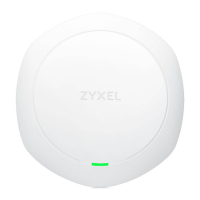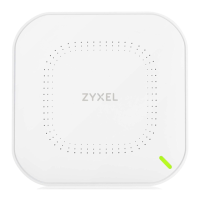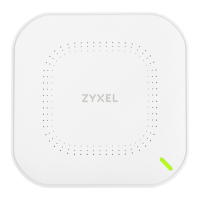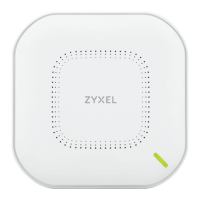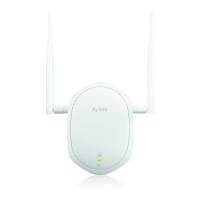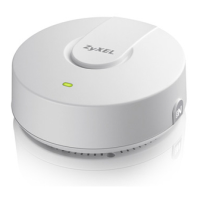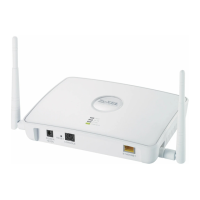
Do you have a question about the ZyXEL Communications NWA5123-NI and is the answer not in the manual?
| Modulation | 16-QAM, 64-QAM, BPSK, QPSK |
|---|---|
| Frequency band | 2.4, 5 GHz |
| Number of users | - user(s) |
| Channel bandwidth | 60 MHz |
| Channels quantity | 2 channels |
| Networking standards | IEEE 802.11a, IEEE 802.11b, IEEE 802.11g, IEEE 802.11n, IEEE 802.3, IEEE 802.3af, IEEE 802.3u |
| Maximum data transfer rate | 300 Mbit/s |
| Quality of Service (QoS) support | Yes |
| Ethernet LAN (RJ-45) ports | 1 |
| Security algorithms | WEP, WPA, WPA-PSK, WPA2, WPA2-PSK |
| Antenna gain level (max) | 3 dBi |
| Input current | 1 A |
| AC input voltage | 12 V |
| Internal | No |
| Storage temperature (T-T) | -30 - 70 °C |
| Operating temperature (T-T) | 0 - 50 °C |
| Operating relative humidity (H-H) | 10 - 90 % |
| Package depth | 207 mm |
| Package width | 282 mm |
| Package height | 71 mm |
| Package weight | 630 g |
| Width | 130 mm |
|---|---|
| Height | 54.5 mm |
| Weight | 250 g |
Provides a general overview of the user guide and the NWA/WAC series.
Explains the operational modes: standalone AP and managed AP.
Outlines methods for managing the device: Web Configurator, CLI, FTP.
Describes the status indicators for various NWA/WAC models.
Step-by-step instructions to log into the device's web interface.
Explains the layout and navigation of the web interface.
How to launch the initial configuration wizard.
Guide to configuring basic settings through the wizard.
Description of the main status screen and its widgets.
Monitoring the device's processing capacity.
Displays Ethernet interface and packet statistics.
Accessing and managing system log entries.
Configuration of the device's IP address and subnet mask.
Configuration of Virtual Local Area Network settings.
Configuration of general wireless settings for Access Points.
Management of rogue and friendly Access Points.
Configuration of Bluetooth beacon IDs for advertising.
Overview of all configured user accounts.
Controls default user settings and login policies.
Creating and managing radio configurations for APs.
Configuring wireless network names and parameters.
Managing security configurations for wireless networks.
Creating monitor mode configurations for wireless scanning.
Managing Wireless Distribution System configurations.
Generating and managing device certificates.
Importing and managing trusted CA certificates.
Configuring the unique network name for the device.
Setting the device's clock and time synchronization.
Securely accessing the device's command line interface.
Configuring daily system statistics reports via email.
Configuring system logs and alerts for viewing or emailing.
Managing device configuration files for backup and restoration.
Checking and uploading device firmware.
Generating configuration and diagnostic information for troubleshooting.
Controlling the behavior of device LEDs.
Adjusting antenna orientation for optimal coverage.
Restarting the NWA/WAC device.
Safely powering down the device.
Troubleshooting issues related to device access and login.
Procedure to restore the device to factory default settings.
Steps for importing certificates within Internet Explorer.
Steps for importing certificates within Firefox.
Explanation of IPv6 address formats and structure.
How IPv6 addresses are automatically generated.
Details to have ready when contacting customer support.
Contact information for global Zyxel offices.
Compliance information from regulatory bodies.
Details regarding FCC electromagnetic compatibility.
Information on FCC RF exposure limits.
Critical safety precautions for device installation and usage.
